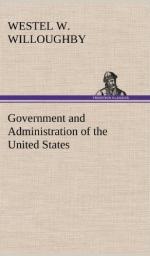The candidates are now put before the people by their respective parties. The people, of course, do not vote directly for them, but what amounts to the same thing, vote for electors, who are pledged to vote for them. A vigorous campaign of four months then follows, until election day, in the first week in November.
Each candidate, a short time after his nomination, is expected to publish a letter of acceptance, in which he expresses his full confidence and belief in the platform which his party has adopted, discloses his views, and outlines what his future policy will be if he is elected.
To recapitulate, then, in a few words, let us see how a President is nominated and elected.
In nominating the President each voter in caucus or primary meeting shares in choosing delegates to the ward convention, which chooses delegates to the city or county convention, which in turn sends delegates to the district conventions. In these, delegates are chosen for the State conventions, where Presidential electors are appointed, and also the delegates sent to the National Convention.
In the National Convention, composed of delegates sent from the State conventions and Territories, the Presidential candidate is nominated. The electors are elected by the people, who in turn elect the nominees of their National Convention. If State officers, as Governor, Attorney-General, Secretary of State, Treasurer, etc., are to be elected, they are nominated in the State conventions and elected by the people.
Besides counties, townships, and cities, States have other subdivisions for political purposes. Thus the whole State is divided into senatorial districts, each one of which sends one Senator to the State legislature, and also into smaller districts, each one of which sends one member to the lower house of the State legislature. Usually a senatorial district is one or more counties, except in the case of large cities, which may in itself contain two or more senatorial districts.
CHAPTER XXIII.
Introduction to the Study of the History of Political Parties in the United States.
A knowledge of the nature of our federal government, and its relations to the State Governments, of which it is composed, is a prerequisite to an understanding of the history of our political parties.
The government of the United States is a federal republic, first formed by the voluntary union of thirteen commonwealths. At present it is composed of forty-four united States. It is a government of enumerated powers, and in this respect differs radically from the governments of the individual States. As all agree, the Federal Government possesses only those powers specifically granted to it by the constitution. The States possess all powers except those granted to the National Government, and those not prohibited to them by the terms of the constitution. When the government




